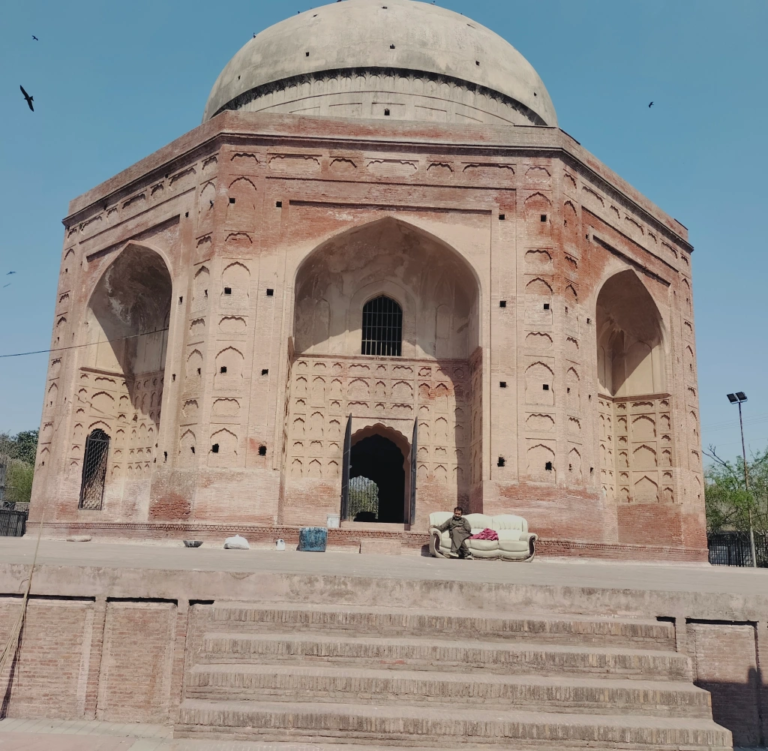Khan-e-Jahan Zafar Jang Kokaltash

By Yemeen Zahra
A Glimpse into the Past
Nestled in the bustling environment of Lahore’s Larechs Colony lies a monument steeped in history, yet often overlooked: the ancient tomb of Khan-e-Jahan Zafar Jang Kokaltash. Once a figure of great significance in the royal court of Mughal Emperor Aurangzeb Alamgir, Khan-e-Jahan’s resting place stands as a symbol of Lahore’s rich but often neglected heritage. Constructed in 1697, this historical site reflects the grandeur of an era when Kokaltash was a prominent figure, revered for his administrative acumen and close relations with the reigning Maharaja.
The Unseen Decay
Despite its grand past, the tomb now presents a scene of neglect, with its once-majestic structure succumbing to the ravages of time. Visible from the city’s Canal Road, the monument whispers stories of its former glory amidst modern chaos. However, not all hope is lost. In 2018, the Punjab Archaeological Department initiated restoration efforts to revive this forgotten treasure, though the site remains partially obscured by ongoing construction work.
A Dance Hall and a Railway Colony: Layers of History
The tomb’s journey through time is marked by various transformations—from a symbol of power to a dance hall during British rule, and eventually to its current dilapidated state. Yet, amidst these transitions, restoration efforts have kindled hope for its revival. The structure’s original marble and intricate designs, once captivating, have largely vanished, but their legacy lingers, urging for preservation.
Restoration and Controversy: The Battle for Authenticity
The ongoing restoration efforts highlight the complex challenges of historical preservation. The use of modern materials, such as cement instead of traditional kankar lime plaster, has sparked debates among conservationists. This clash between old and new encapsulates the broader struggle to maintain the integrity of our cultural landmarks.
Architectural Splendor Unveiled
Despite the absence of its original marble facade, the tomb’s architectural brilliance remains undeniable. With its distinctive octagonal design, towering arches, and the once-majestic dome, the mausoleum continues to hold secrets of the past, waiting to be rediscovered. The presence of geometrically laid bricks and remnants of a bygone era on its podium invite visitors to pause and reflect on the fleeting nature of time and the enduring beauty of art.
A Call to Action: Preserving Lahore’s Heritage
The tomb of Khan-e-Jahan Zafar Jang Kokaltash stands as a powerful symbol of Lahore’s cultural heritage and underscores the pressing need to preserve such historical landmarks. It challenges us to recognize the value of our historical sites and to take active steps in safeguarding them for future generations. Let us not wait until the echoes of the past fade into silence but work together to keep these stories alive, ensuring that Lahore’s hidden gems are cherished and celebrated for years to come.



